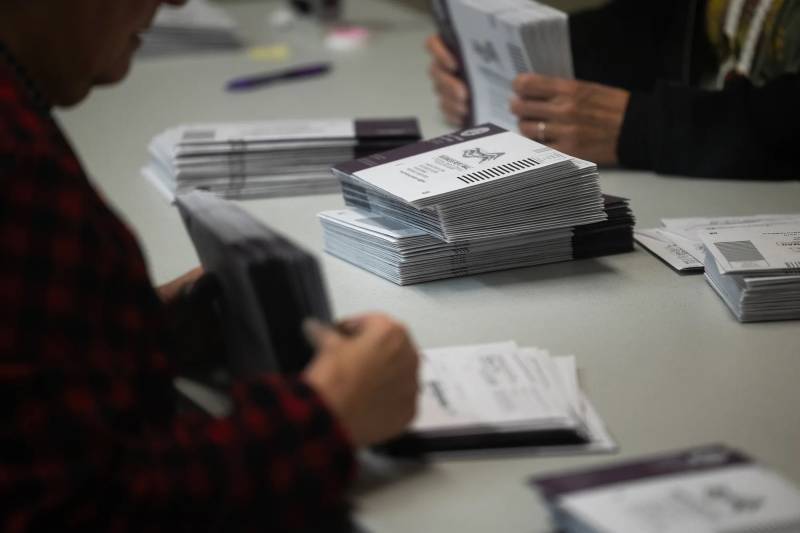A total of eight key contests remained uncalled by the Associated Press as of late Tuesday, including two congressional races, five legislative races and one statewide ballot measure. (CalMatters and other news outlets use AP to declare winners while the vote count is ongoing.)
By making the vote count more transparent, the close contest tracker aims to inoculate against unfounded conspiracy theories about election fraud in California, Alexander said.
Some prominent conservatives, including GOP U.S. Rep. Marjorie Taylor Greene, are spreading unproven claims that Democrats are “stealing” the 45th Congressional District race in Southern California, where Democrat Derek Tran is leading by a razor-thin margin over Republican Rep. Michelle Steel after trailing her for days.
“We wanted to create a record of where the vote count stood each day so that if someone came along later and said, ‘Something hinky is going on here,’ there would be a reliable source of information people could turn to to see how the vote count evolved over time,” Alexander said.
The tracker also comes as frustration about the lengthy process grows in California. State Assemblymember Joe Patterson, a Rocklin Republican, called the procedure “dumb” on social media, arguing that winners of state legislative races will be sworn in on Dec. 2 before the results are certified by the Secretary of State. The lengthy process “sows distrust” in the state’s election system, he told KCRA.
The state Assembly and Senate already held a joint freshman orientation last week for incoming lawmakers, while the five legislative races remain too close to call, Assembly Republicans spokesperson Jim Stanley confirmed to CalMatters.
“It’s a real problem for incoming lawmakers if they miss out on that,” Alexander said.
Why it takes so long to count — and how to speed it up
While voters and campaigns want to see results sooner, it is particularly challenging in California, Alexander said.
The state is home to more than 22 million registered voters, according to the state Secretary of State’s office. As of Tuesday afternoon, a total of 15 million ballots had been counted — a number bigger than the populations of 46 other states, Census data shows.
California has also made it easier for voters to cast their ballots in recent years. A 2021 law made universal vote-by-mail permanent in California, meaning every registered voter receives a mail-in ballot roughly a month before Election Day, and the ballots are counted as long as they arrive at county elections offices within seven days after Election Day. In the March primary, almost 90% of all voters voted by mail, according to the Secretary of State.
The widespread use of vote-by-mail slows down the vote count, Alexander said, because they take longer to process.
“We have to open the envelopes, we have to verify the signature, and all of those things before we can actually accept that ballot,” Secretary of State Shirley Weber said in a press conference last week.
Additionally, election officials have to first complete counting mail-in ballots before they move onto ballots cast by voters who register the same day they voted to make sure no voter votes twice, said Jesse Salinas, president of the California Association of Clerks and Election Officials and clerk-recorder in Yolo County. The number of same-day registered voters has grown over the years, further slowing down the vote count, he said.
